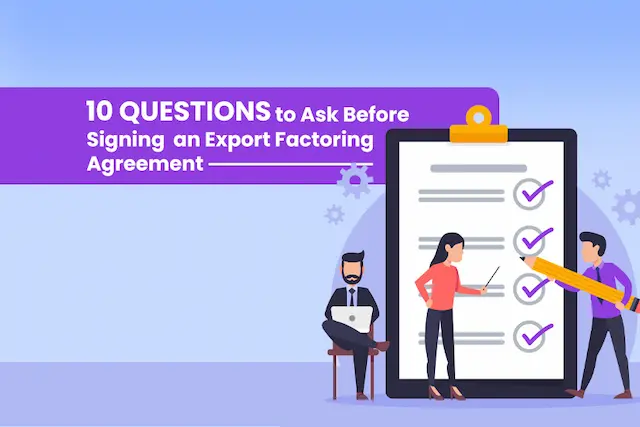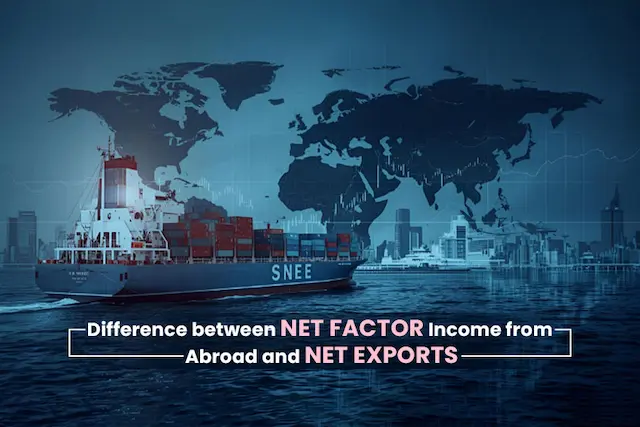Did you know that global trade finance is a $10 trillion industry, with factoring playing a big role in helping businesses manage their cash flow? Export factoring is one such solution that allows businesses to receive immediate payment for their export invoices. This is especially useful for companies looking to improve their cash flow and minimize risks.
In this blog, we will explore different types of export factoring facilities. Each type helps exporters in unique ways, from getting fast payments to managing risk. Read on to discover which export factoring solution might be best for your business!
What is Export Factoring?
Export factoring is a financial service that helps businesses manage their cash flow by providing immediate payment for their export invoices. Here’s how it works in simple terms:
Sell Goods and Send Invoice: A business (the exporter) sells goods to an international buyer and sends them an invoice. This invoice states how much the buyer needs to pay and when.
Submit Invoice to Factor: Instead of waiting for the buyer to pay, the exporter gives this invoice to a factoring company (the factor).
Receive Immediate Payment: The factor pays the exporter most of the invoice amount right away, usually around 80-90%. This helps the exporter get cash quickly.
Factor Handles Collection: The factor takes over the responsibility of collecting payment from the buyer.
Final Settlement: Once the buyer pays the invoice, the factor gives the remaining balance to the exporter, minus a fee for their services.
Export factoring helps exporters by improving their cash flow and reducing the risk of non-payment, making it easier for them to run their businesses smoothly.
Also Read: Types of Export Factoring
Different Export Factoring Facilities
Here are the different types of export factoring facilities:
1. Recourse Factoring
Resource factoring is a financing option where the exporter sells their invoices to a factoring company but retains the responsibility if the buyer fails to pay. The factoring company advances most of the invoice amount to the exporter right away. However, if the buyer does not settle the invoice, the exporter must repay the factoring company.
This type of factoring usually comes with lower fees since the factoring company is taking on less risk. It’s suitable for exporters who are confident in their buyer’s ability to pay but want to access cash quickly.
2. Non-Recourse Factoring
In non-recourse factoring, the factoring company assumes the risk of non-payment by the buyer. The exporter sells their invoices to the factoring company and receives most of the invoice amount upfront. If the buyer does not pay, the factoring company absorbs the loss instead of the exporter.
This type of factoring is more expensive because the factoring company is taking on greater risk. It’s ideal for exporters who want to avoid the risk of bad debts and prefer not to worry about payment collection issues.
3. Maturity Factoring
Maturity factoring involves the factoring company buying the exporter’s invoices and waiting until the invoice due date to collect payment from the buyer. The exporter receives a large portion of the invoice amount upfront, while the factoring company handles the collection. The exporter benefits from immediate cash flow, but the factoring company manages the collection process and waits until the invoice is due to collect payment.
This method is useful for exporters who need cash quickly but don’t mind the factoring company handling the payment collection.
4. Invoice Discounting
Invoice discounting allows exporters to borrow money against their unpaid invoices while retaining control over the collection process. The exporter sells their invoices to a factoring company or bank and receives a portion of the invoice amount immediately.
The exporter then manages the collection from the buyer. When the buyer pays, the exporter repays the lender, plus a fee or interest. This method provides quick cash flow while allowing the exporter to keep control over customer interactions and collections.
5. Export Factoring
Export factoring is a specialized form of factoring designed for businesses involved in international trade. In this process, the exporter sells their invoices related to international sales to a factoring company. The factoring company provides immediate cash advance and takes on the responsibility of collecting payment from the foreign buyer.
Export factoring helps exporters manage their cash flow and reduces the risk associated with selling goods internationally. It’s beneficial for exporters who deal with international clients and need a reliable way to finance their operations and manage receivables.
6. Domestic Factoring
Domestic factoring is when an exporter sells invoices related to sales within their own country to a factoring company. The factoring company provides an advance on the invoice amount and takes over the collection process from the domestic buyers.
This type of factoring helps businesses improve their cash flow by accessing funds quickly and managing their receivables more efficiently. It’s suitable for companies that operate within their home country and need financing solutions to handle their domestic sales.
7. Spot Factoring
Spot factoring allows exporters to sell individual invoices to a factoring company on a one-time basis. Instead of committing to a long-term factoring agreement, the exporter chooses specific invoices to factor as needed.
This flexibility lets the exporter access cash for particular invoices without entering into a continuous factoring arrangement. Spot factoring is ideal for businesses that require occasional cash flow support but do not want to engage in regular or ongoing factoring agreements.
8. Reverse Factoring
Reverse factoring, also known as supply chain financing, involves a buyer arranging for a factoring company to pay their suppliers quickly. The buyer sets up an agreement with the factoring company to advance payment to the supplier against the buyer’s confirmed invoice.
This helps suppliers get paid faster, while the buyer can extend their payment terms. Reverse factoring improves the supplier’s cash flow and strengthens the relationship between buyers and suppliers by ensuring prompt payments.
9. Full-Service Factoring
Full-service factoring provides comprehensive factoring solutions, including not only the purchase of invoices but also additional services such as credit control, collections, and debtor management.
The factoring company handles all aspects of managing accounts receivable, allowing the exporter to focus on their core business activities. This type of factoring is ideal for businesses that need more than just financing and prefer to outsource their receivables management to professionals.
Also Read: How Does Export Factoring Work
Conclusion
Export factoring offers various solutions to help businesses manage cash flow and reduce risks in international trade. From recourse and non-recourse factoring to more specialized options like export and reverse factoring, each type caters to different needs. Understanding these options can help exporters choose the right facility to boost their financial stability and operational efficiency. Whether you need quick cash, risk management, or complete receivables support, there’s an export factoring solution designed to meet your needs.
Also Read: Advantages of Export Factoring





